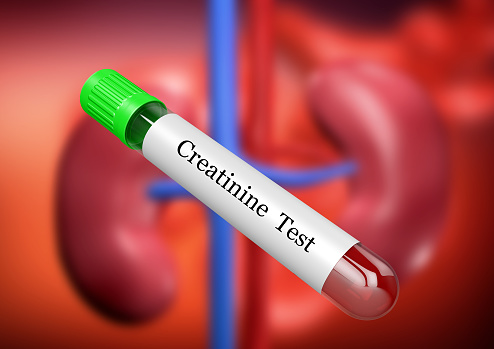Difference Between Blood Urea Nitrogen BUN and Creatinine
What are Blood Urea Nitrogen (BUN) and Creatinine?
Blood urea nitrogen (BUN) and creatinine tests are used by medical experts to find out the Blood urea nitrogen: creatinine). This ration helps to find out health issues like dehydration, that may create imbalance and abnormal Blood urea nitrogen and creatinine levels. Relationship between your creatinine and Blood urea nitrogen is 1:10 relationship
Similarity
Both tests give a clearer picture of the kidney functioning.

What is BUN?
BUN – Blood urea nitrogen test is a common test that assesses the functioning and performance of your kidneys. The test measures the urea nitrogen levels in your blood. The test can actually tell whether BUN levels are higher than normal thereby confirming that your kidneys have a problem and these may not be functioning properly.

What is Creatinine?
A serum creatinine test (sCr) investigates the creatinine level in your blood. Creatinine is a breakdown product that is formed due to the normal damage that naturally and inevitably occurs on muscles in your body. Kidneys that function properly are able to filter out waste item like creatinine and leave the body in your urine. When the kidneys do not function as efficiently as they should, then the creatinine levels can increase in the blood. Hence, investigating the creatinine levels in the blood is used to assess the kidney function. Creatinine levels greater than 1.2 for females and greaten than 1.4 for males may be an early warning that the kidneys are not working well and are damaged. However, the “normal” creatinine level is associated with many other factors like age, gender, size of the body and race. Normal for one person may not be normal for another.
Difference between Blood Urea Nitrogen (BUN) and Creatinine?
Definition
BUN
Blood urea nitrogen (BUN) is a kidney test that assesses the urea nitrogen levels present in the blood
Creatinine
It is a waste product usually eliminated from the body by the kidneys. The creatinine test helps to measure the kidney performance and function.
What is normal?
BUN
Blood urea nitrogen is normal if it is between 7 and 20.
Creatinine
Normal values by age are – 0.9 to 1.3 milligram/dL for adult males. 0.6 to 1.1 milligram/dL for adult females. 0.5 to 1.0 milligram/dL for children aged three to eighteen years.
Testing methods
BUN
Blood urea nitrogen is measured mostly enzymatically – glutamate dehydrogenase (GLDH) method
Creatinine
Creatinine is measures either chemically or enzymatically
Chemical method- Jaffe reaction method
Enzymatically – spectrophotometer method
Summary
The points of difference between BUN and Creatinine have been summarized as below:

FAQ
Which is more accurate BUN or creatinine?
Creatinine is a more reliable indicator of kidney performance and function in comparison to Blood urea nitrogen because it is less influenced by other factors like hydration and diet.
What if BUN is normal but creatinine is high?
BUN cannot be normal if creatinine is high. Dehydration results in blood urea nitrogen levels to increase more than the creatinine levels. This results in a significant increase in BUN-creatinine ratio. The blockage of the urine flow from the kidneys or any other kidney disease results in a high BUN and creatinine levels.
What level of BUN indicates kidney failure?
There is no definite or specified value of Blood urea nitrogen (BUN) that would identify a kidney failure. A GFR (Glomerular filtration rate) below 60 is an indication that the kidneys are not working properly. Once the (Glomerular filtration rate) comes down below 15, immediate medical attention and treatment is required for kidney failure, like dialysis (a treatment that filters and purifies the blood using a machine) or a kidney transplant. Urea nitrogen comes from the breakdown of protein present in the diet you consume.
What is the difference between BUN and blood urea?
BUN (Blood urea nitrogen) reflects only the nitrogen content of urea (Molecular Weight 28) and urea measurement reflects the whole of the molecule (Molecular Weight 60), urea is approximately twice (60/28 = 2.14) that of Blood urea nitrogen. Hence Blood Urea Nitrogen 10 milligram/dL is equivalent to urea 21.4 milligram/dL.
What happens if creatinine is high?
High level of creatinine is an indication that your kidneys are not performing well and are unable to filter blood effectively. Such a scenario results in a range of symptoms, that include muscle cramps, nausea, and chest pain. Elevated creatinine measure signifies inefficient kidney function. Since the kidneys are not able to function properly to be able to eliminate toxins and waste from the body, the creatinine levels in the blood will increase and could result in possible malfunction of kidneys or kidney failure.
What is the relationship between BUN and creatinine?
Relationship between your Blood urea nitrogen and your is 1:10 relationship. A BUN test is mostly carried along with creatinine test to help investigate and assess how well the kidneys are functioning.
- Difference Between Global Warming and Greenhouse Effect - May 18, 2024
- Difference Between Vaccination and Immunization - March 3, 2024
- Difference Between Selective Mutism and Autism - February 25, 2024
Search DifferenceBetween.net :
References :
[0]Hosten, A. O. (1990). BUN and creatinine. Clinical Methods: The History, Physical, and Laboratory Examinations. 3rd edition.
[1]Kamal, A. (2014). Estimation of blood urea (BUN) and serum creatinine level in patients of renal disorder. Indian J Fundam Appl Life Sci, 4(4), 199-202.
[2]Lyman, J. L. (1986). Blood urea nitrogen and creatinine. Emergency medicine clinics of North America, 4(2), 223-233.
[3]STARK, J. L. (1980). BUN/creatinine: your keys to kidney function. Nursing2020, 10(5), 33-38.
[4]Image credit: https://media.istockphoto.com/photos/blood-sample-in-test-tube-for-laboratory-creatinine-examination-picture-id1178462453?k=20&m=1178462453&s=170667a&w=0&h=xbO6XsV4l35k6v44AmAEsWe2vchQtpkpcLnRxRgrOqI=
[5]Image credit: https://visit-health-prod.s3.eu-west-2.amazonaws.com/IMAGE/679b82ee-9643-4b22-ba7b-0a4c589be98e.jpg
